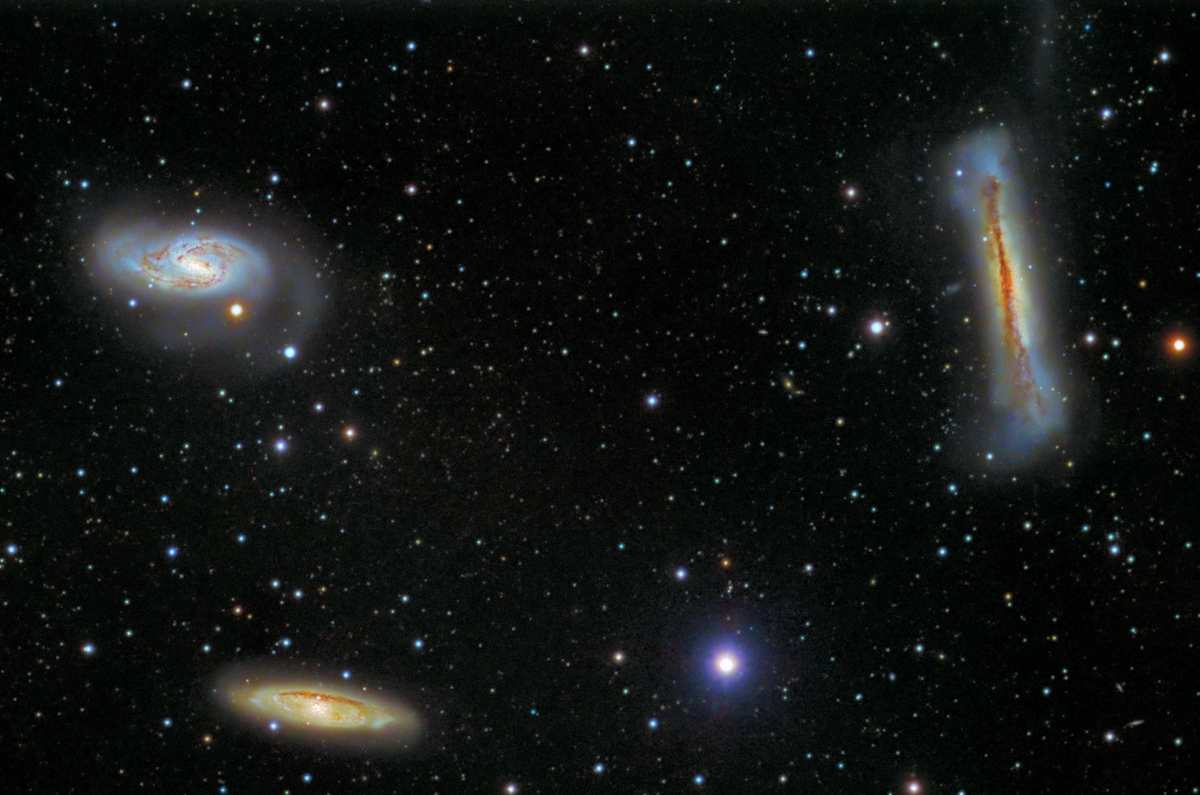Unlock the wonders of the cosmos with these expert tips on observing the Leo Triplet of galaxies. Discover the secrets of this celestial trio and enhance your stargazing experience.
Introduction
The Leo Triplet of galaxies, also known as the M66 Group, is a fascinating astronomical phenomenon that offers a stunning spectacle for stargazers. Composed of three spiral galaxies—M65, M66, and NGC 3628—this trio resides approximately 35 million light-years away in the constellation Leo. Observing these galaxies can be a rewarding experience, providing insights into the vastness and beauty of our universe. Whether you are an amateur astronomer or a seasoned sky watcher, here are five essential tips to make the most out of observing the Leo Triplet.
1. Choose the Right Equipment
To observe the Leo Triplet of galaxies effectively, it is crucial to have the right equipment at your disposal. A telescope with a moderate to large aperture is recommended, as it allows you to gather more light and see fainter details. Ideally, a telescope with an aperture of at least 8 inches (200mm) would be suitable for observing the Leo Triplet. Additionally, consider using eyepieces with longer focal lengths to achieve higher magnification and better resolution.
2. Find a Dark and Clear Sky Location
One of the key factors in successful galaxy observation is finding a dark and clear sky location. Light pollution can hinder your ability to observe faint celestial objects like the Leo Triplet. Therefore, it is essential to choose a site far away from city lights and other sources of light pollution. Look for dark sky locations or astronomical observatories near your area. If that’s not feasible, try to observe during moonless nights or when the Moon is not in the vicinity of the Leo Triplet, as the moonlight can also diminish the visibility of faint galaxies.
3. Familiarize Yourself with the Leo Constellation
Before embarking on your observation journey, it is helpful to familiarize yourself with the Leo constellation. The Leo Triplet is located within this constellation, making it easier to locate and track these galaxies. Look for the distinctive “sickle” pattern of stars that forms the head and mane of the celestial lion. The Leo Triplet can be found near the hindquarters of the lion, forming a small triangle. Identifying prominent stars and constellations in the vicinity will assist you in navigating the night sky and pinpointing the Leo Triplet.
4. Use Astronomical Apps or Star Charts
In the age of technology, astronomical apps and star charts have become invaluable tools for astronomers. Utilize these resources to enhance your Leo Triplet observation experience. Several mobile apps are available that offer real-time star maps, enabling you to identify constellations and locate specific objects with ease. Some apps even provide information about the Leo Triplet, including its coordinates and visibility throughout the year. Alternatively, traditional star charts can serve as reliable references when observing the Leo Triplet and other celestial wonders.
5. Observe Under Favorable Conditions
Observing the Leo Triplet under optimal conditions can significantly enhance your ability to appreciate its beauty. Plan your observation session on a clear night with stable atmospheric conditions. Avoid observing during hazy or cloudy nights, as it may diminish the contrast and visibility of the galaxies. Patience is crucial when observing faint objects like the Leo Triplet. Take your time to allow your eyes to adapt to the darkness, and avoid sudden movements that can disrupt your night vision. By choosing the right time and ensuring favorable observing conditions, you can maximize your chances of witnessing the splendor of the Leo Triplet.
Conclusion
Observing the Leo Triplet of galaxies can be an awe-inspiring experience that allows us to glimpse the immense scale and complexity of the universe. By following these five essential tips—choosing the right equipment, finding a dark and clear sky location, familiarizing yourself with the Leo constellation, using astronomical apps or star charts, and observing under favorable conditions—you can optimize your chances of observing and appreciating the Leo Triplet. So, grab your telescope, head to a dark location, and immerse yourself in the wonder of the cosmos as you explore the fascinating Leo Triplet of galaxies.

